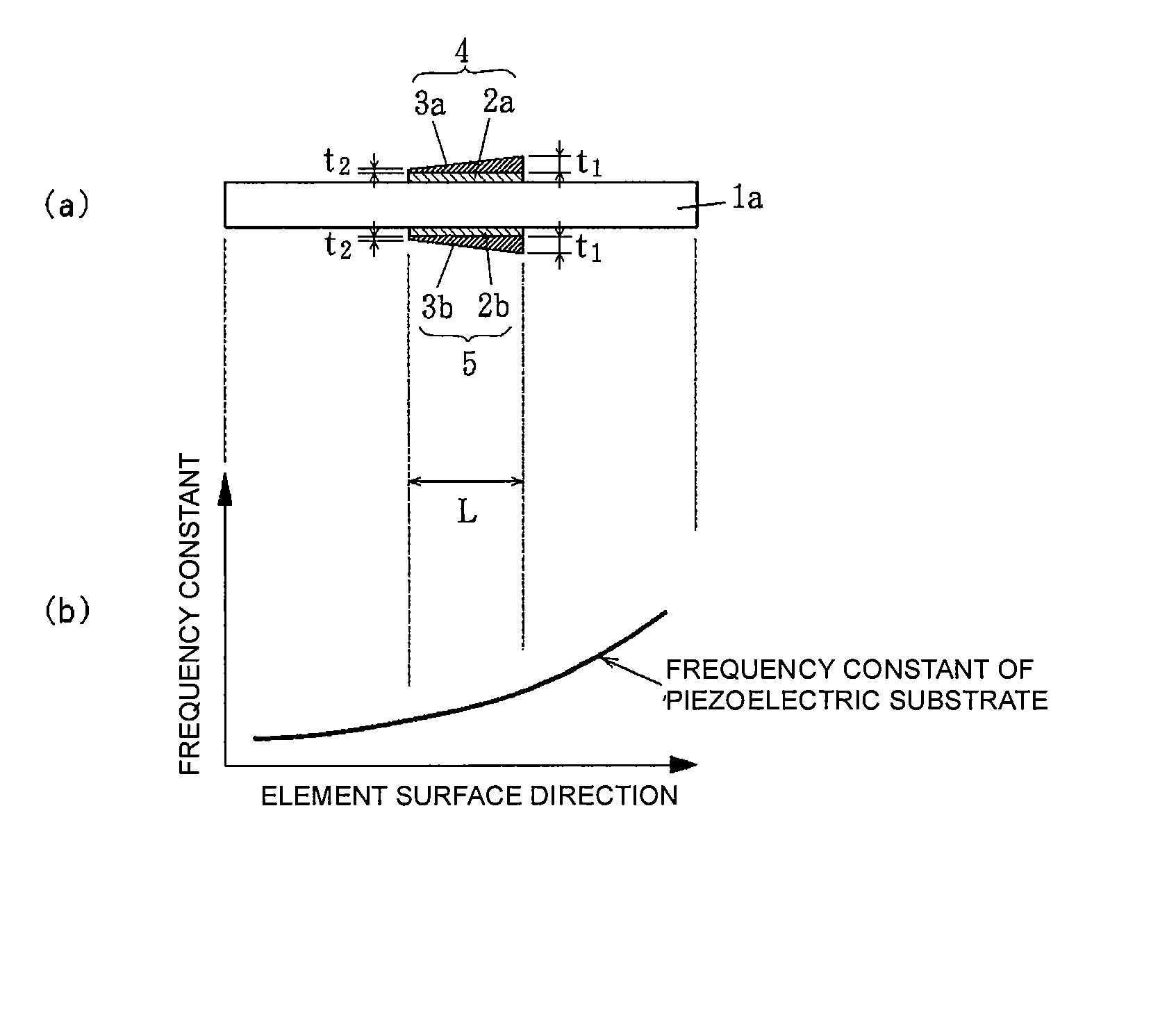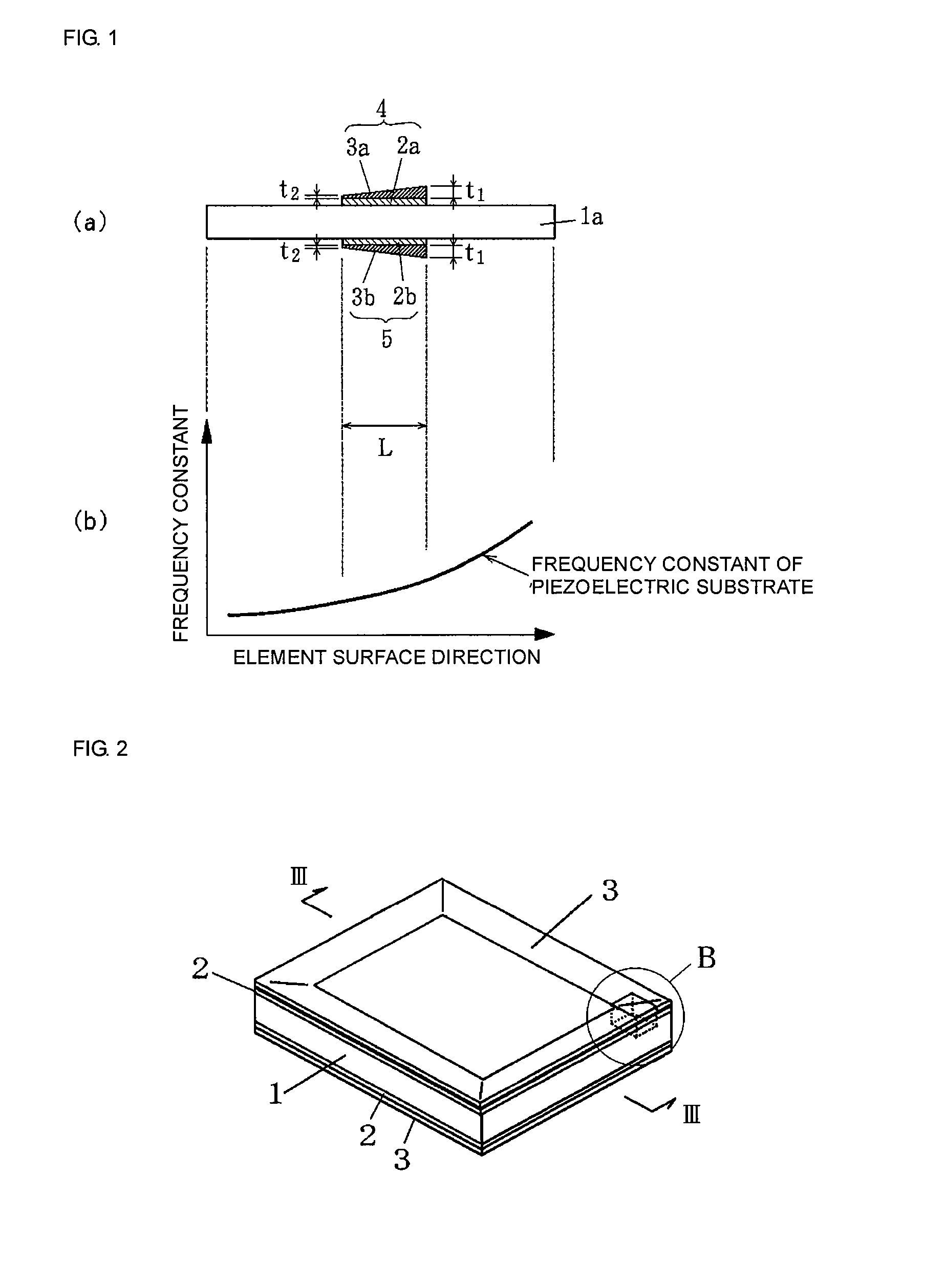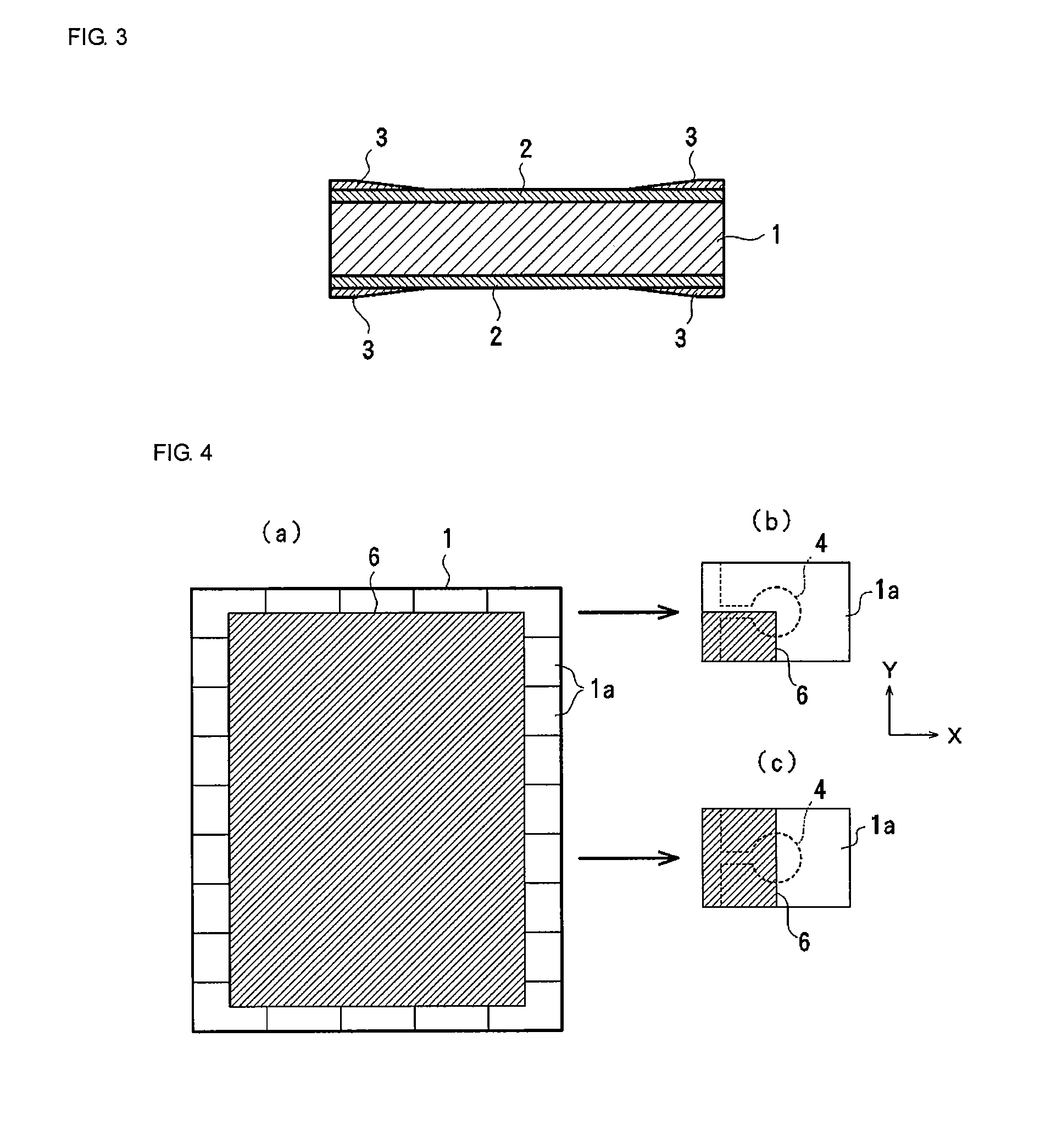Piezoelectric Resonator and Method for Producing the Same
a resonator and piezoelectric technology, applied in piezoelectric/electrostrictive/magnetostrictive devices, piezoelectric/electrostriction/magnetostriction machines, impedence networks, etc., can solve the problem of ineffective suppression of unnecessary vibrations generated by the gradient of frequency constant of piezoelectric substrates, and inability to achieve precise resonant frequency, etc. problem, to achieve the effect of suppressing unnecessary in-band
- Summary
- Abstract
- Description
- Claims
- Application Information
AI Technical Summary
Benefits of technology
Problems solved by technology
Method used
Image
Examples
embodiment 1
[0051]FIG. 1(a) shows a first embodiment of a piezoelectric resonator according to the present invention. The piezoelectric resonator is an energy-trapped piezoelectric resonator in a thickness-longitudinal vibration mode.
[0052] The piezoelectric resonator includes a rectangular piezoelectric substrate 1a formed of a piezoelectric ceramic, such as a lead zirconate titanate ceramic or a lead titanate ceramic. The piezoelectric substrate 1a is polarized in a thickness direction. The resonant frequency of the piezoelectric resonator depends on its thickness. When the thickness is 0.475 mm, the resonant frequency is 16 MHz.
[0053] Vibrating electrodes 4 and 5 facing each other are formed at the center of front and back surfaces of the piezoelectric substrate 1a. Although not shown in FIG. 1, extraction electrodes extracted from the vibrating electrodes 4 and 5 to the periphery of the piezoelectric substrate 1a and terminal electrodes are formed on the front and back surfaces of the pie...
embodiment 2
[0074] FIGS. 10(a) to (c) show another embodiment of electrode structures of the piezoelectric resonator according to the present invention.
[0075]FIG. 10(a) shows the case in which the vibrating electrodes 4 and 5 with a gradient thickness have a single-layer structure. As a layer underlying the vibrating electrodes 4 and 5, an alloy layer formed of Ni, Cr, and the like may be used to enhance the adhesion to the piezoelectric substrate (ceramic).
[0076]FIG. 10 (b) shows the case in which the vibrating electrode 4 disposed on the front surface has a gradient thickness, whereas the vibrating electrode 5 disposed on the back surface has a constant thickness. In this case, let t3 be the thickness of the thickest portion of the vibrating electrode 4 disposed on the front surface, t4 be the thickness of the thinnest portion of the vibrating electrode 4, and L be the length of the vibrating electrode 4. Then, it is preferable that the thickness gradient ratio (t3−t4) / L=0.10 to 0.40. That ...
PUM
 Login to View More
Login to View More Abstract
Description
Claims
Application Information
 Login to View More
Login to View More - R&D
- Intellectual Property
- Life Sciences
- Materials
- Tech Scout
- Unparalleled Data Quality
- Higher Quality Content
- 60% Fewer Hallucinations
Browse by: Latest US Patents, China's latest patents, Technical Efficacy Thesaurus, Application Domain, Technology Topic, Popular Technical Reports.
© 2025 PatSnap. All rights reserved.Legal|Privacy policy|Modern Slavery Act Transparency Statement|Sitemap|About US| Contact US: help@patsnap.com



